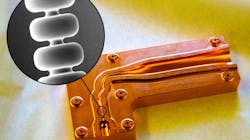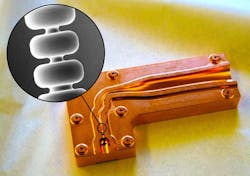THz Radiation Could Help Miniaturize and Amplify Particle Accelerators
A team of scientists at DoE’s SLAC National Accelerator Laboratory has invented a new type of particle accelerator that delivers 10 times the energy gain over a given distance compared to current accelerators. This could make accelerators used for a given application 1/10th the length of today’s machines.
Current accelerators rely on high-energy radio-frequency (RF) fields to boost the particle’s speed and energy. The field feeds into specifically cavities where the particles get exposed to it. Each cavity delivers a limited energy boost over a given distance, so it takes a long line of cavities to create high-energy beams.
SLAC’s new accelerators uses terahertz (THz) waves as opposed to RF fields. Although both are forms of electromagnetic radiation, THz waves are 10 times shorter than radio waves, so the cavities in THz accelerators can also be smaller. In fact, the one built by the team measured only 0.2 in. long.
Building those smaller cavities to the tolerances required forced the team to come up with a new manufacturing method for the devices. In the past, the standard method was to construct them by stacking thin layers of layers of copper on top of each other. The team got a more accurate and precise cavity by machining two halves and bonding them together.
The new structure also generates particle pulses a thousand times shorter than those from conventional copper cavities. This means they can produce beams pulsing at a higher rate and capable of unleashing more power over a given period of time.
The researchers next goal is to turn their invention into an electron gun that could generate bright beams of electrons for next-generation X-ray lasers, electron microscopes and even cancer treatments. At the same time, the team must wait for better, more efficient THz generators. The short wavelength of THz waves makes it difficult to develop and build THz sources. Currently, SLAC researchers are exploring electron beam and laser-based THz generators as the high peak power inside smaller accelerators for future real-world applications.

